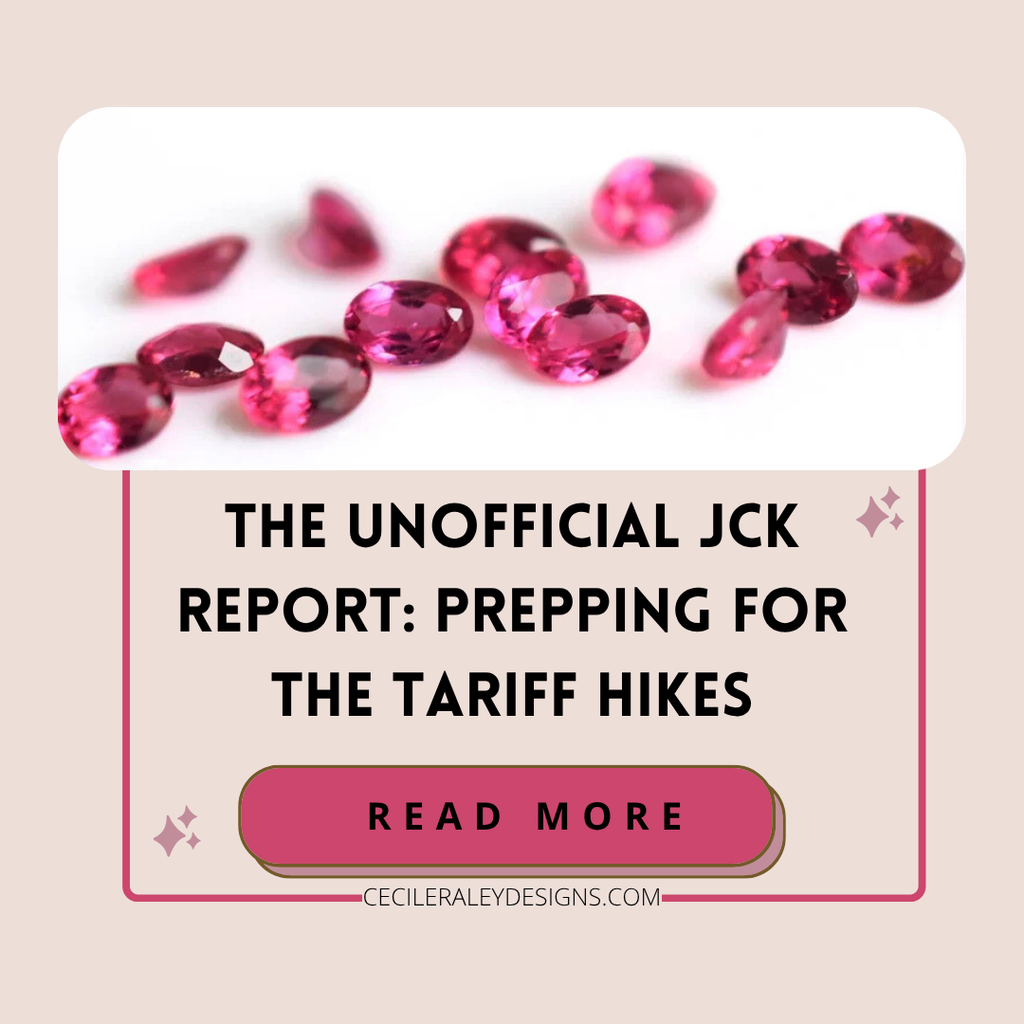The Unofficial JCK Report: Prepping for the Tariff Hikes

This year I went to Las Vegas for 3 days only. A few of my usual vendors decided to sit out the show because of the tariffs, so I shortened my own trip and saved some bucks. The tariff hike loomed large at the show and caused a few unwelcome changes.
Tariffs are not like import taxes or custom duties that are so commonly assessed in Europe, Canada and Australia. Prepaid duties will be refunded to the importing vendor once the merchandise leaves the U.S. again: the vendor pays the duty on the total value of the import before the show. So, for example, if the value of the gems that are brought to the show is $1 million and the import country is Germany then the vendor prepays $190,000 to show those goods in Germany. Once they leave, this amount is refunded minus the duty of the sales that occurred at the show.
Tariffs, on the other hand, are not refundable even if the goods do not permanently stay in the U.S. Tariffs are paid each time the merchandise is brought to the U.S. even if it is the same merchandise. That makes the back and forth of merchandise that gem shows necessitate an impossibility. Also, for some vendors, coming up with large sums of cash before the show is impossible as all the funds have been allocated to buying the inventory.
As a result, some vendors decided not to attend the show this year. Others permanently imported their inventory, or a portion of it intended for the U.S. audience, and they are scrambling to find ways to keep the inventory here, i.e. with another trusted vendor, or by opening a small office somewhere (one of my vendors is opening a small office in New York City for example). A riskier option would be to not declare the import - and pay a huge fine if found out, as well as being banned from bringing goods into the US or even forbidden from coming back altogether. Another option would be not to sell at the show and declare the merchandise as for display only – this is typical for tech goods and other manufactured items including clothes and even jewelry (as well as big and heavy items like washing machines or cars). If the show merchandise is for display only, gems would then have to be shipped back to the U.S. after the vendor returns to their home country with their goods. Only then will the recipient pay the tariff, which is currently 10% for gems.

The good news is that both attendees and vendors who did come, did well. A preliminary report from the show indicates a high sales volume, and the pending increase in tariffs are the most often provided reason for this.
Yours truly shopped as well. I stocked up in colored diamonds (mostly yellow, golden, and a few very light pinks), sapphires (mostly smaller blue sapphires but also a few Asschers, and a few additional purples), more kornerupine and grey spinel, as well as Russian no oil emeralds, moonstones, and of course, Paraiba tourmaline (blue and blue green melees and 4 single stones).

In the ‘hard to come by’ category were hexagons and kites. Only one of my vendors still produces them, the rest are selling down and not cutting more. I guess the phase is over for these. Purple and lavender tones are also difficult to find now as purple sapphires are not as common as blues – and they are very popular these days.
It has really only been about 10 years – 15 tops – that the American public has become educated about types of gemstones and their treatments via the Internet, and Internet sales. Correspondingly, there has been an increase in demand for colored gems (outside of the sapphire, ruby and emerald category) and untreated gems (even within the popular categories of sapphire, ruby and emerald). This is another reason why prices are still adjusting upwards – demand can simply not be met. For instance, pink spinel was almost unheard of in 2010 and is now among the most popular selling gems. But because the neon colors never existed in sufficient quantities to satisfy a world market, we have seen price increases from $40-400/ct in the melees for example, and from the hundreds into the thousands in larger sizes. Many other gems have gone from being a rare collectors’ item, or a fun gem owned by a few, to an item coveted by the general public. In 2009, I was buying moonstone starting at $2 a carat. Now prices for me start at 20x that number. Of course, I also buy better quality now, but in general, prices have gone up x10-x20 and more since I started in this trade.

That said, the vendors I spoke to about this in passing all seemed to agree that these price adjustments were called for because given the rarity of these gems, they were greatly undervalued when they first began selling to the public. You can take a look at the AGTA's take on the tariffs in their article here.
So: if you still own some material you got for a low price 10-15 years ago, you might now own something of much greater value. That is the good news😊.
